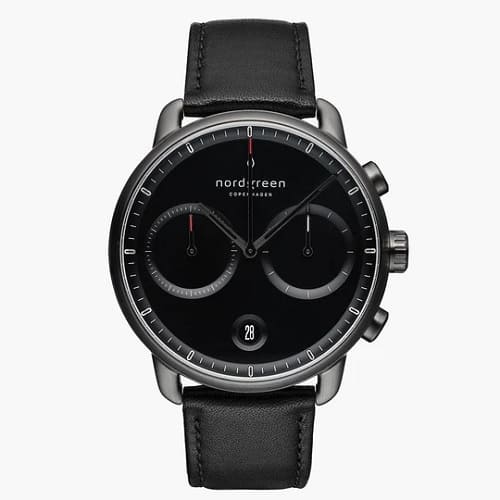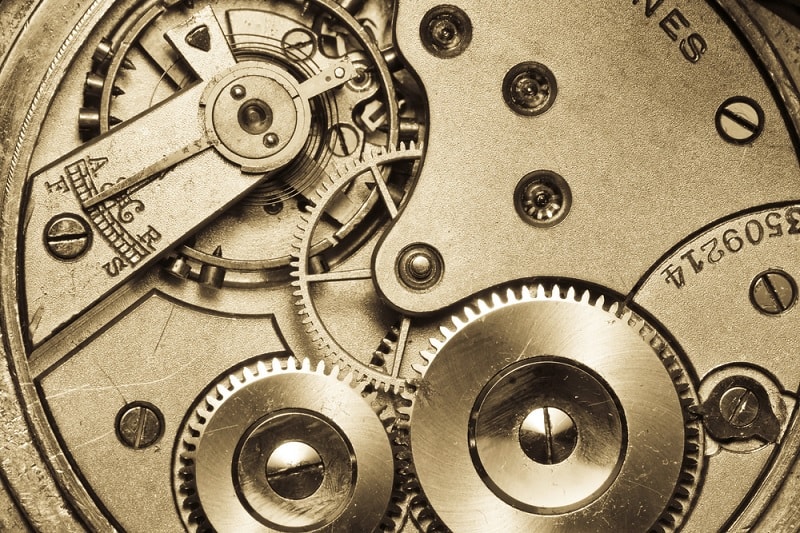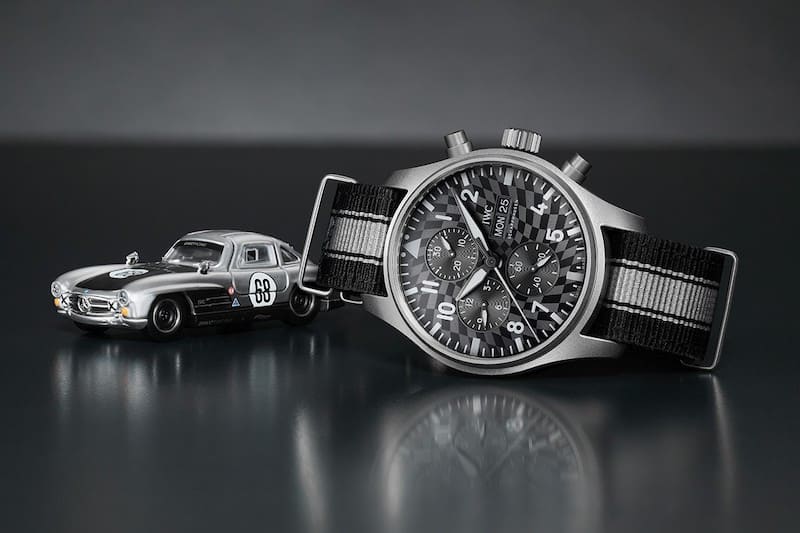What Is a Chronograph Watch?
 Nordgreen’s Pioneer Chronograph, with sub-dials opposite each other at 9 and 3 o’clock.
Nordgreen’s Pioneer Chronograph, with sub-dials opposite each other at 9 and 3 o’clock.
The term used to describe wristwatch additions like a chronograph is called a ‘complication,’ named because of the added level of difficulty and mechanics added to a traditional mechanical watch.
The Tachymeter

Here’s where things get more interesting. Almost every chronograph watch you can find will have a tachymeter on the bezel.
To put it simply, a tachymeter is used to measure speed based on time traveled over a fixed distance, or distance based on speed. Not good with numbers? Don’t worry; there’s an easy way to figure it out.
Measuring speed
The formula is T = 3600/t. T represents the numbers on the tachymeter’s scale, and t represents the time measured in seconds by the all-important chronograph function. 3600 is the number of seconds in one hour.
Now that we have all that, let’s measure speed. If, for example, it takes you 30 seconds to travel one mile, the corresponding number on the tachymeter is 120. That means you’re traveling 120 miles per hour.
Measuring distance
You need to know your speed to measure distance with a tachymeter. Firstly, start at zero seconds, and stop once the tachymeter indicates your traveling speed.
For example, if you’re moving along at 60mph, every time it hits 60 on the tachymeter, that means you’ve traveled one mile.
Things do get a bit tricky for lower speeds, so your best bet is to multiply the rate by two, then divide at the end once you’ve got your number.
Because nobody likes working decimals, if it’s your first time with a chronograph, don’t worry. As with most things like this, practice makes perfect.
History of the Chronograph Watch

The story begins in 1816, when Louis Moinet invented the very first chronograph. The stopwatch would be crucial to early discoveries of the great unknown and was used to track astrological movements.






















